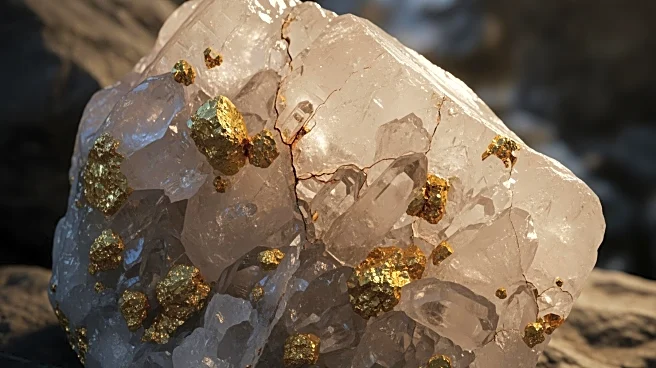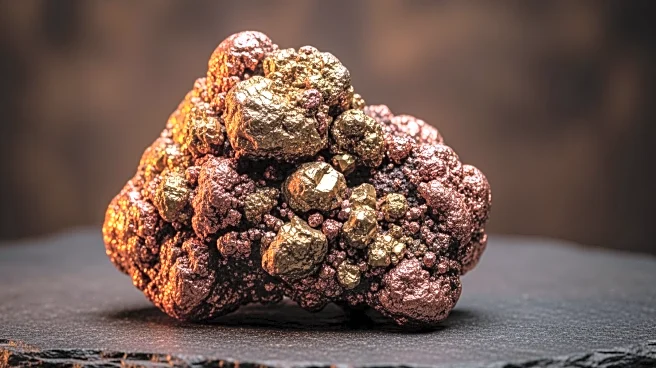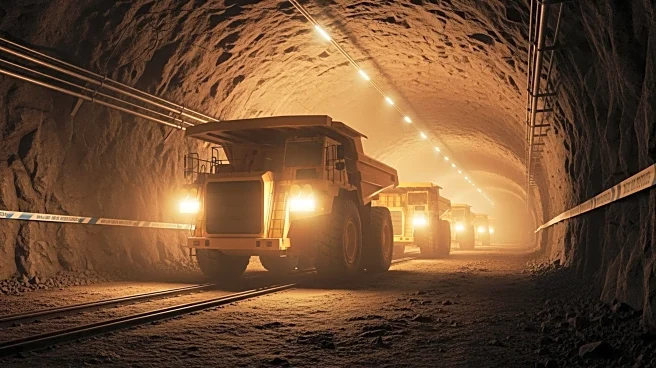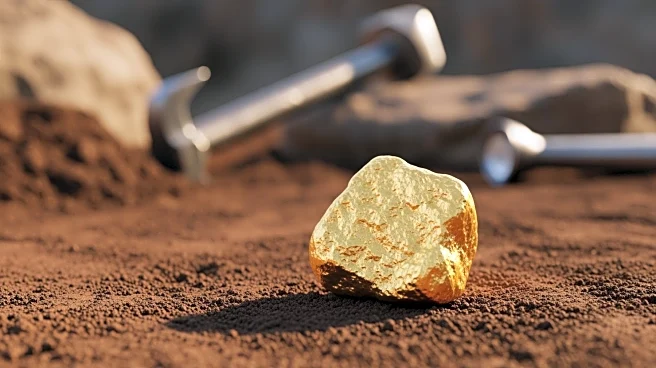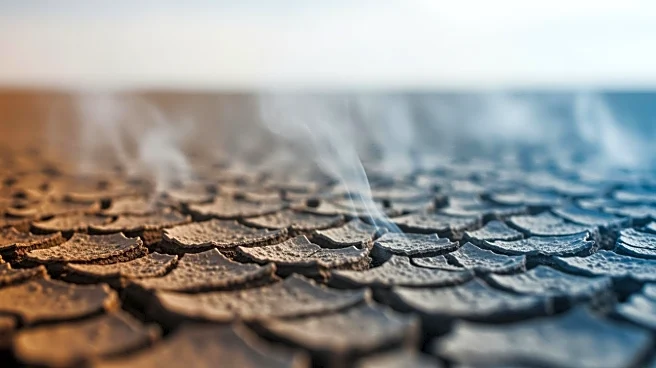What's Happening?
A recent study conducted by geologist Christopher Voisey and colleagues at Monash University, CSIRO, and the Australian Centre for Neutron Scattering has uncovered a novel mechanism by which gold can form inside quartz veins during earthquakes. The research
focuses on the piezoelectric properties of quartz, which generate voltages when the crystal is stressed, such as during seismic activity. These voltages can facilitate the electrochemical deposition of gold onto quartz surfaces. The study involved lab experiments where quartz was placed in gold-bearing solutions and mechanically stressed to simulate earthquake conditions. The results showed that gold nanoparticles and pseudo-hexagonal crystals formed on the quartz, suggesting that piezoelectric charges can concentrate gold growth on existing grains, leading to the formation of larger nuggets.
Why It's Important?
This discovery provides a new understanding of gold formation, which could have significant implications for the mining industry. Traditionally, gold deposits have been attributed to hydrothermal processes, but this study introduces an additional mechanism that could explain the presence of large gold nuggets in quartz veins. The findings suggest that seismic activity plays a crucial role in concentrating gold deposits, potentially leading to more efficient mining techniques. By understanding the conditions that favor gold accumulation, mining operations could target areas with high seismic activity and quartz presence, optimizing resource extraction and reducing environmental impact.
What's Next?
Further research is likely to explore the practical applications of this discovery in mining operations. Geologists and mining companies may investigate regions with frequent seismic activity and quartz-rich fault zones to identify new gold deposits. Additionally, the study could prompt a reevaluation of existing gold mining sites, considering the role of piezoelectric effects in gold formation. Collaboration between geologists and mining engineers could lead to innovative extraction methods that leverage the natural processes identified in the study.
Beyond the Headlines
The study highlights the intricate relationship between geological processes and mineral formation, emphasizing the complexity of natural systems. It also raises questions about the sustainability of mining practices and the need for environmentally conscious approaches. By understanding the natural mechanisms of gold formation, the industry can develop strategies that minimize ecological disruption while maximizing resource recovery. This research may also inspire further exploration into other minerals and their formation processes, potentially leading to breakthroughs in resource management.
